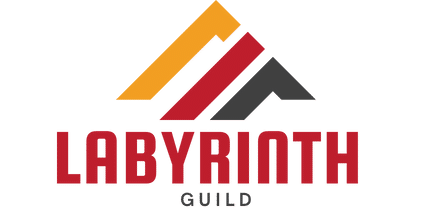Adopting a dog or a cat from an animal shelter offers a lifeline to an animal who needs it. Not only does it provide a loving family for the pet, but it also creates a space for another animal to be rescued. It really is an amazing act of love and compassion. However, it’s essential to understand that your newly adopted furry friend may require a period of adjustment in their new surroundings.
How can you help ensure this transition happens as smoothly as possible? In this article, we’ll explore some practical tips and methods for helping your new pet adapt to their new forever home.
Also read : How to Train Your Pet to Participate in Pet-Friendly Community Service Projects?
Training: The Bridge to a Happy Home Life
Finding the perfect pet requires a lot of time and consideration. So you’ve finally brought your new family member home from the shelter. Now what? Training is the next crucial step. Training forms the foundation of good behaviour and helps your pet understand what is expected of them.
Creating a regular routine is beneficial for both dogs and cats. Pets thrive on routines, so try to feed, play, and let them out for toilet breaks at the same times each day. They will soon become accustomed to this pattern, which can help them feel more secure.
Also to read : How to Create a Pet Emergency Plan for Natural Disaster Evacuations?
Regardless of the pet’s age, training should begin straight away. Whether it’s house training a dog or teaching a cat to use the litter box, this is an aspect of pet ownership you should be prepared for. Remember to be patient. It will take time for your pet to learn and adjust, so be sure to reward them for good behaviour to encourage consistency.
The Importance of a Balanced Diet: What and When to Feed Your Pet
A good diet is key to your pet’s health and well-being. When you bring your pet home from the shelter, they may have been on a specific diet. Check with the shelter to ensure you know what food they have been eating. It’s usually best to stick to this diet at first to avoid upsetting the animal’s digestive system.
A balanced diet for your dog should contain protein, carbohydrates, and fats. Cats, being obligate carnivores, need a diet high in animal protein. Consider consulting with a vet to customize a diet plan for your pet’s breed, age, size, and health condition.
Be mindful of feeding times. Regular feeding times not only help maintain a healthy weight, but it also helps with toilet training. And just like humans, pets appreciate a regular feeding schedule.
Health and Wellness Checks: Early Prevention is Better Than Cure
After adoption, schedule a visit to the vet. A thorough checkup can ensure your pet is healthy and free from common shelter-related illnesses. Ensure your pet is up-to-date on vaccinations, has been dewormed, and is free of fleas and ticks. If your pet is not already spayed or neutered, discuss the best time to have this done.
Regular check-ups are an essential part of your pet’s health regime. They help catch any potential health problems early and ensure that your pet is in the best possible shape. Don’t forget about dental care, either. Regular teeth cleanings can prevent oral disease, which can lead to more serious health issues if left untreated.
Socialization: Prepare Your Rescue for the World
If you’ve adopted a dog, socialization is an absolute must. Dogs who are well socialized are less likely to develop behavior problems like aggression and fearfulness. Begin by introducing your dog to new sights, sounds, and smells within your home and gradually expose them to other people and dogs.
Cats, on the other hand, may need some time to adjust to their new surroundings before meeting new people or animals. Ensure they have a safe space where they can retreat to if they feel overwhelmed, like a separate room with their bed, food, and litter box.
Patience and Love: The Secret Ingredients
Every animal comes with its own unique personality and set of challenges. Whether it’s a dog that’s been bounced from home to home or a cat that’s had a traumatic past, they all need time to adjust and feel safe. Be patient, reassure them often, and provide lots of love.
Remember, you are their safe haven. The bond that you will form with your rescued pet can be incredibly rewarding. With time, patience, and plenty of affection, they will soon start to feel right at home.
Creating a Comfortable Environment: Making Your Home a Pet Haven
When adopting a rescue dog or a cat, making your home comfortable and safe for them is crucial for a smooth transition. Just like humans, pets also crave their own space and sense of security. Your home should feel welcoming and calming, prompting your furry friend to relax and settle in.
Choose a quiet area in your house and designate it as your pet’s safe spot for the first few weeks. This spot could be used to place their bed, food, water, and toys. Ensure this space is free from household noise and disruptions. For a newly adopted dog, consider using a crate. For a cat, a small room with a litter box, food, and water would be ideal.
Invest in quality pet supplies including a comfortable bed, durable toys, and appropriate food and water dishes. Remember, dogs and cats have different needs. For instance, cats need scratching posts to keep their claws healthy, while dogs might appreciate chew toys to keep them engaged.
Introduce them to the house slowly, starting with the safe spot and gradually expanding to other areas. This will help reduce the overwhelming sensation of a new environment and allow them to explore their surroundings at their own pace. Try not to force your pet into spaces they aren’t comfortable with; instead, encourage exploration through positive reinforcement.
The goal here is to make your home a haven for your pet. It’s the environment where they will feel secure, loved, and free to express themselves. This is an important part of the adoption process that many pet parents tend to overlook. But remember, a comfortable home environment will play a significant role in ensuring a smooth transition.
Bonding with Your Pet: Cultivating Trust and Understanding
Bonding with your pet is an essential part of the adoption process. It helps build trust, encourages good behavior, and creates a strong emotional connection. The process of bonding can vary greatly depending on the pet’s previous experiences, but with time and patience, you can develop a deep bond with your adopted dog or cat.
Spend quality time with your pet. This doesn’t mean you have to be with them every minute, but dedicate a part of your day to play, train, groom or just cuddle with them. This will help them understand that they are important to you and that you are there for them.
Use positive reinforcement during training. Rewarding good behavior with treats, praise, or play can foster a stronger bond. Avoid punishment as it can create fear and mistrust, which are the last things you want in a newly adopted pet.
Communication is key. Learn to understand your pet’s body language. This will help you identify their needs, fears, and preferences, making the bonding process easier.
Remember, all pets are different. Some might bond quickly, while others take time. It’s crucial to be patient and give them the space they need to adjust. The bond you build with your furry friend will be worth the effort, adding joy and love to both of your lives.
Conclusion: Ensuring a Smooth Transition for Your Shelter Pet
Adopting a dog or a cat from a shelter is a rewarding experience. It provides them with a loving home while offering you a loyal and loving companion. However, the transition from shelter life to a home environment can be challenging for the pet. Therefore, as pet owners, it’s our responsibility to make this transition as smooth as possible.
From creating a comfortable environment and establishing a regular routine to providing a balanced diet, regular health checks, and socialization opportunities, every aspect plays a critical role in helping your pet adjust to their new home.
But above all, patience, love, and understanding are the most essential ingredients in ensuring a smooth transition for your adopted pet. It may take weeks or even months for your pet to fully adjust, but once they do, the bond you share with your furry friend will be unbreakable.
Remember, by adopting a rescue dog or cat, not only are you giving them a second chance at a happy life, but you are also making a positive impact by encouraging pet adoption and promoting animal welfare. Welcome to the wonderful journey of pet parenting!











